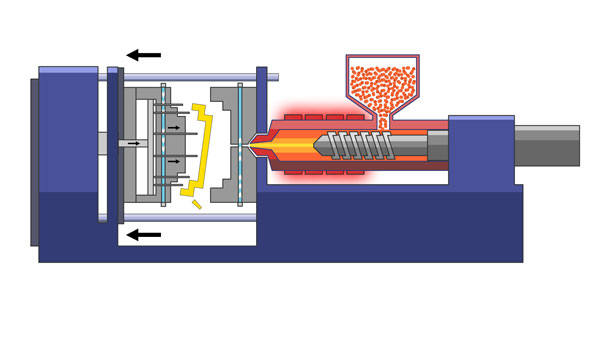The Ultimate Guide To Oems
Wiki Article
The Ultimate Guide To Hon Hai Precision
Table of ContentsThe Single Strategy To Use For OemThe Basic Principles Of Hon Hai Precision Rumored Buzz on MfgThe Ultimate Guide To Hon Hai PrecisionSome Known Factual Statements About Oem Plastic Manufacturing - Truths
The text on this page is an example from our full White Paper 'Injection Moulding for Purchasers' - * Sample message * - for complete guide click the download button above! Intro This guide is meant for people that are aiming to source plastic mouldings. It gives a much needed understanding into all that is included with creating plastic components, from the mould device required to the moulding procedure itself.If you desire to explore better, the guide covers kinds of mould tools, in addition to unique ending up processes such as colours & plating. Words that are underscored can be found in the reference in the appendix ... Component I: Moulding: The Basics The Benefits of Injection Moulding Plastic injection moulding is an extremely exact procedure that uses numerous benefits over various other plastic processing approaches.
Precision is perfect for extremely complex components. You can hold this moulding in the hand of your hand as well as it has employers, ribs, metal inserts, side cores as well as holes, made with a gliding shut off function in the mould device.
4 Simple Techniques For Plastic Manufacturing


Lean Production - The Facts
from material feed Product melting; material injectionProduct shot time cooling down ejection to the re-closing of the mould tool ready device all set next cycleFollowing Draft angles - The wall surfaces of a moulded component must be slightly tapered in the instructions in which the component is ejected from the mould tool, to permit the part to be ejected quickly.Ejector stroke - The pressing out of ejector pins to eject the moulded part from the mould device. Ejector stroke speed, length and timing needs to be very carefully controlled to prevent damage to the ejectors as well as mould device, however at the exact same time make the moulding cycle as short as possible.

Top Guidelines Of Mfg
Ribs - When a plastic part has slim wall surfaces, ribs are included in the layout to make the thin walls more powerful Side cores - Side activity which produces a function on a moulded component, at an opposing angle to the regular opening direction of the mould device. plastic manufacturing. The side core needs to be able to withdraw as the plastic part can not be ejected or else.
Walls - The sides of a moulded component The message on this page is a sample from our full White Paper 'Shot Moulding for Customers'.
Manufacturing procedure for generating parts by injecting molten material right into a mould, or mold and mildew Streamlined layout of the procedure Shot moulding (U.S. punctuation: shot molding) is a production process for generating components by injecting molten product into a mould, or mold. Shot moulding can be done with a host of materials primarily including steels (for which the procedure is called die-casting), glasses, elastomers, confections, as well as many frequently polycarbonate and also thermosetting polymers. Shot moulding is commonly made use of for making a range of parts, from the tiniest components to whole body panels of autos. Advancements in 3D printing innovation, making use of photopolymers that do not thaw throughout the injection moulding of some lower-temperature thermoplastics, can be made use of for some easy shot moulds. Shot moulding makes use of a special-purpose maker that has three components: the injection device, the mould and also the clamp.
Our Mfg PDFs
, with the quantity used of the former being considerably higher.: 13 Thermoplastics are common due to attributes that make them extremely appropriate for shot moulding, such as convenience of recycling, flexibility for a broad selection of applications,: 89 and capability to soften and also stream on home heating.In multiple cavity moulds, each dental caries can be identical and also form the same components or can be one-of-a-kind as well as form numerous various geometries during a solitary cycle. Moulds are generally made from tool steels, however stainless steels and also aluminium moulds appropriate for specific applications. Aluminium moulds are usually improper for high quantity manufacturing or parts with slim dimensional tolerances, as they have inferior mechanical homes and also are much more vulnerable to use, damages, click now and also contortion during the injection as well as securing cycles; however, aluminium moulds are economical in low-volume applications, as mould construction costs and also time are significantly reduced.
The screw provides the raw product ahead, mixes and also homogenises the thermal as well as viscous circulations of the polymer, as well as lowers the required home a knockout post heating time by mechanically shearing the material as well as including a substantial quantity of frictional heating to the polymer. The product feeds forward through a check valve and also accumulates at the front of the screw into a volume referred to as a shot. When sufficient product has actually collected, the material is forced at high stress and rate right into the component forming tooth cavity. The precise quantity of shrinkage is a function of the resin being used, and also can be reasonably foreseeable. To avoid spikes in stress, the process generally makes use of a transfer placement representing a 9598% full cavity where the screw shifts from a consistent speed to a consistent pressure control.
Not known Incorrect Statements About Mfg
The packing stress is applied up until the gate (cavity entryway) solidifies. Due to its small size, the gateway is generally the initial location to solidify through its whole thickness.: 16 Once the entrance strengthens, no even more material can enter the tooth cavity; as necessary, the screw reciprocates as well as gets product for the next cycle while the material within the mould cools so that it can be ejected and also be dimensionally stable.Report this wiki page